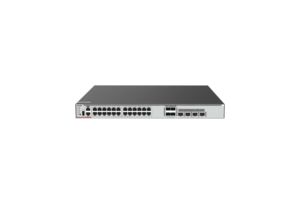|
RICERCA
|
|
RG-CS86 SeriesMulti-GE Switches Product Overview RG-CS86 series switches are next-generation multi-GE switches developed by Ruijie. With an advanced hardware architecture and Ruijie modular operating system, the RG-CS86 delivers fast hardware processing and good operation experience.The RG-CS86 offers flexible multi-GE access (10GE/5GE/2.5GE/1GE) and high-performance 10GE/40GE uplink ports, catering for demands of high-density access and high-performance aggregation. The RG-CS86 delivers robust performance, sound end-to-end service quality, and rich security functions for the aggregation layer of large-scale networks, the core layer of small- and medium-scale networks, and campus data centers. This satisfies requirements on high speed, security, and intelligence for enterprise campus networks. Product Features Multi-GE Access Recent years have witnessed the rapid evolution of the Ethernet interface standards from 10BASE-T and 100BASE-T to 1000BASE-T (IEEE 802.3ab) that is widely applied to devices covering PCs and APs. However, as the Wi-Fi 6 technology has been introduced, APs can delivers an uplink rate of 10 Gbps, posing an increasing challenge to GE network devices. The RG-CS86 provides 100M/1000M/2.5G/5G Base-T and 100M/1000M/2.5G/5G/10G Base-T Ethernet ports in auto-negotiation mode which can better adapt to Wi-Fi 6 APs. High-Power PoE Power Supply In the previous scenarios of PoE remote power supply, only PoE (IEEE 802.3af) and PoE+ (IEEE 802.3at) standards are available. If the power exceeds 30 W, PoE cannot be used for power supply. Instead, power cables must be deployed for mains power supply, and even EHV power deployment is required. This imposes tremendous challenges on deployment costs and period, maintenance, and security during the deployment. In compliance with the IEEE802.3bt standard, the RG-CS86 adopts high-power PoE power supply and achieves a maximum PoE output of 90 W through a single Ethernet port to significantly improve user experience. IPv4/IPv6 Dual-Stack Multi-Layer Switching The hardware of the RG-CS86 supports IPv4/IPv6 dual stacks and multilayer line-rate switching to differentiate and process IPv4 and IPv6 packets. The RG-CS86 also provides flexible IPv6 network communication solutions for users to perform network planning or maintain network status quo based on various IPv6 network demands. The RG-CS86 supports a wide range of IPv4 routing protocols, covering IPv4 static routing, RIP, OSPFv2, IS-ISv4, and BGP4. You can select appropriate routing protocols to flexibly build networks based on various network environments. Meanwhile, the RG-CS86 also supports abundant IPv6 routing protocols, including IPv6 static routing, RIPng, OSPFv3, IS-ISv6, and BGP4+. A routing protocol can be selected flexibly to upgrade the live network to an IPv6 network or establish a new IPv6 network. Virtual Switching Unit The RG-CS86 supports Virtual Switch Unit (VSU). VSU enables multiple physical devices to be connected through aggregate links and virtualized into one logical device. The devices use the same IP address, Telnet process, and CLI for management, and support automatic version check and automatic configuration. In this context, a network administrator only manages one logical device, improving working efficiency and experience. Simplified management: The network administrator can manage multiple switches uniformly without connecting to each switch for separate configuration and management. Simplified network topology: A VSU serves as a switch on a network and connects to peripheral devices through aggregate links. Therefore, no Layer 2 loop occurs and MSTP configuration is not required. Various control protocols can run on the VSU. Fault recovery within milliseconds: A VSU connects to peripheral devices through aggregate links. If a fault occurs on one device or member link in the VSU, data and services can be switched to another member link within 30 ms. High scalability: Devices can be added to or removed from a virtualized network, without affecting normal operation of other devices. Sound Security Protection Policies The RG-CS86 can effectively defend against virus spread and hacker attacks through multiple inherent mechanisms, such as DoS attack defense, IP scanning attack defense, validity check of ARP packets, and multiple hardware-based ACLs. The hardware-based IPv6 ACL can easily control the access of IPv6 users at the network edge even if there are IPv6 users on an IPv4 network. The switch allows IPv4 and IPv6 users to coexist and can control access permissions of IPv6 users, for example, restricting access to sensitive resources on the network. The RG-CS86 provides a unique hardware CPU protection mechanism: CPU Protection Policy (CPP). The CPP enables the switch to classify data traffic sent to the CPU, process the traffic by queue priority, and apply the rate limit to traffic as required. The CPP fully protects the CPU from being occupied by unauthorized traffic, malicious attacks, and resource consumption, which ensures the security of the CPU and the switch.
|
Capitale sociale Euro 62.400,00 i.v., C.F. / P.IVA 01837180304, Iscrizione C.C.I.A.A. Registro Imprese di UDINE n. 01837180304
Privacy Policy | Cookie Policy
© project Web Industry


